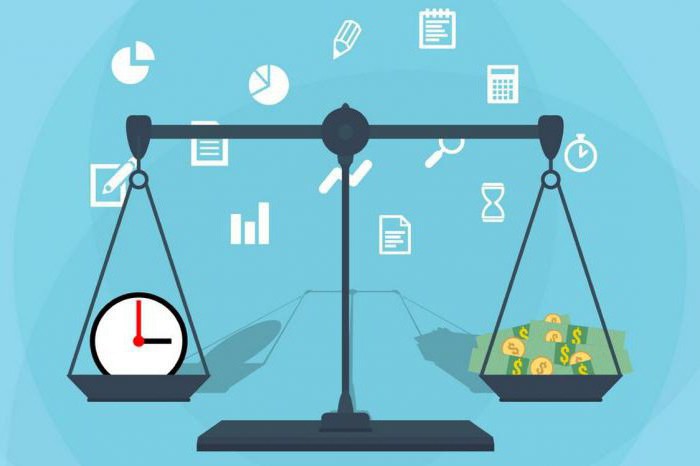Payback period - formula, calculation example. Discounted payback period
The payback period for investments plays a very significant role. For an investor, this parameter is in the first echelon. How is the payback period calculated? Does the formula for calculating it give accurate data? You will find out about this by reading the article.
general information
The payback period is important for anyone looking to invest their funds. It allows you to estimate after what time interval the money will return to the owner and bring "friends" with them. So how do you know the payback period? The formula for it is as follows: SOI = PP, while it is summed up by PP: PDS / (1 + BS) ^ NP, provided that they are greater than the value of the initial investment in the zero period. How to decipher here? SOI is the payback period of the investment. Calculated at current values. An emergency is understood as the number of periods. For each, its own value is calculated, which are then summed up. PDS - cash inflow for a specific period. BC is the barrier rate, also known as the discount rate. NP - period number. This is how the payback period is described. The formula, of course, is not an easy one. But the examples and explanations that will be given below will help to understand it.
Theoretical benefits

So, we have a tool that will allow you to find out the payback period of the project. The formula is already there, but not everyone understands. Initially, I would like to dwell on the theoretical aspect. By correctly applying the data described above, a person can count on two wonderful investment analysis tools.
So, for a start, you can calculate what the payback will be at the current cost. It can also be used to determine the number of time periods that are needed in order to recover investment costs. Depending on the goals set for the person or organization, you can also provide different accuracy of calculations. For a better understanding and consideration of what the payback period is - an example of a calculation.
Case number 1
An investment was made in the amount of 1,150,000 rubles. In the first year, income was received in the form of 320,000 rubles. In the second, it has already grown to 410 thousand rubles. In the third year, we earned 437,500 rubles. The fourth was not very successful, and had to be content with 382,000 rubles. At the same time, our barrier rate is 9.2%. Yes, we haven't considered it yet, but it will definitely be fixed. So, we consider:
- 320 000 / (1 + 0,092) = 293040,3.
- 410 000 / (1 + 0,092) 2 = 343825,9.
- 437 500 / (1 + 0,092) 3 = 335977,5.
- 382 500 / (1 + 0,092) 4 = 268992,9.
If we sum up the values that we got, then it is not difficult to see that investments will be recouped only in the fourth year of the enterprise's operation. And only then they will generate income. If we detail and instead of the barrier rate we put the difference between the sum of all four years and the size of the investment, then we get 3.66 years. After that, the investment will generate income. I hope this has brought some clarity to what the payback period of the project is. The formula is already more understandable, and in general, it can be used for specific purposes. But for a better understanding of the situation, it is necessary to gain some more knowledge.
A bit of theory

Payback is understood as an indicator that acts as an estimate of the characteristic time for an investment. In other words, how quickly expenses will be reimbursed by income. And a little about the discounted period. Why is he? The discounted payback period is used to give a rough estimate of the liquidity of the project and a rough estimate of the risk to which the investor is exposed. One may come across thoughts that it is better to use the internal rate of return. But in this case, a comparative analysis of the feasibility of making investments should still be carried out. That is, this is a more complicated matter. And if you are just interested in the payback period, the formula posted in the article is ideal for this. In addition, the internal payback ratio does not allow determining the profitability of the project, they will not pay attention to cash flows.
And a little more theory

In addition, the discounted payback period, the formula for which is available in the article, also has a number of advantages that are not always visible at first glance. For example, this approach is used in countries where there is an unstable legal, tax and / or political system. After all, its essential property is to reduce financial risks. Thanks to him, you can determine how stable the demand for investment will be.
Let's take a quick example. There is a limited amount of oil on earth. It is actively consumed, so the price will rise. Therefore, it makes sense to bet on it. But just do not sell cheap, but hold on to your own stocks until better times. If you invest in a project, then it will bring in more and more money over time. At the same time, there is information technology. In this case, there is an extremely rapid progress in both hardware and software. After a certain, rather short period, information products are no longer in demand and their support ceases. Therefore, it is necessary to have a high payback here.
About discounted payback period

The formula discussed earlier had one element that was incomprehensible to us. This is a barrier bet. It is used to assess the efficiency of cash flows over a given period. In another way, we can say that this is an interest rate; it is used to recalculate future flows into one value of the present value. To obtain it, you can use the formula: BS = 1 / (1 + ND) ^ (NP-1). Now let's deal with all this. ND is understood as the discount rate. It can be the same for all formulas, or it can be different. NP-1 is the interval between the period, which is estimated, and the moment of casting, which is expressed in years. This alone is enough to understand what the payback period is.
Yes! More theory
When the criterion of discounting the payback period is used when evaluating projects, all decisions can be made based on certain conditions. This is:
- A project is considered attractive when there is a payback.
- In case the deadline for the company is not exceeded.
When considering the mechanism for the formation of the final indicator, it is necessary to pay attention to a number of points that reduce the potential for use within the established system of assessing the effectiveness of investment projects. Initially, it should be noted that the calculations do not take into account the amount of net cash flow, which is formed after the end of the payback period of investment costs.
Features of calculations

It should be noted that if an investment project is considered, which has a long service life, rather than one with a small one, then the amount of net cash flow is significantly larger in quantitative terms. This applies to a similar and even faster payback period for the latter. There is one more point that lowers the estimated potential of the payback period. The longer the period between the beginning of the project cycle and the operational phase, the longer it is, the higher the size of the payback indicator. The third feature is the presence of a significant range of fluctuations due to changes in the level of the discount rate. The higher it is, the more its value grows. All of this can work and vice versa.
It should be understood that the discount rate is an auxiliary indicator. It is used in the selection of investment projects. In practice, it is important in that it can indicate a time horizon during which a project can be classified as particularly reliable. Then the funds in which the investments were made will gradually become obsolete. Their effectiveness decreases, they become less and less competitive.
Case number 2

We are approaching the end of the article, which discusses the payback period. An example of a calculation will help consolidate the knowledge gained. Let's assume that investments were made in the amount of 4,945 thousand rubles. We get the following income:
- First year - 1,376 thousand rubles.
- The second is 1,763,000.
- The third - 1 881 250.
- The fourth - 1,644,750.
We take the size of the barrier rate from the previous problem, that is, 9.2%. And we begin to calculate the rate of payback of the project:
- 1 376 / (1 + 0,092) = 1 260.
- 1 763 / (1 + 0,092) 2 = 1 478,4.
- 1 881,25 / (1 + 0,092) 3 = 1 444,7.
- 1 644,75 / (1 + 0,092) 4 = 1 156,67.
We begin to count the values. And we again see that the investment pays off in four years. The most attentive of those who performed the calculations may notice that here the term is also 3.66. After that, investments begin to bring us income.
So we have given the definition of the payback period. Depending on our goals and objectives, certain points may change. All of them must also be taken into account. All this will ensure high accuracy and reliability of the data that were obtained using the mathematical apparatus.
 Discounted payback period
Discounted payback period Methodological aspects of project management
Methodological aspects of project management Scrum development methodology
Scrum development methodology